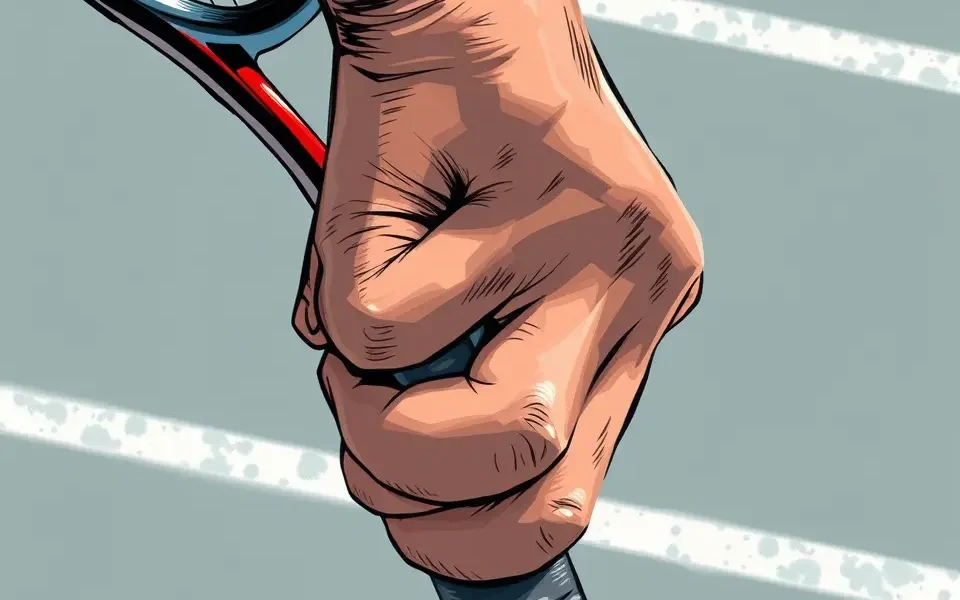Coco Gauff, the young American tennis sensation, has been facing scrutiny regarding her serving performance. Once considered a major strength, Gauff’s serve has become a liability, plagued by double faults and inconsistency. Andrea Petkovic, a former top-10 player, has offered a “hot take” on the possible cause of Gauff’s struggles, suggesting a change in grip may be the culprit.
The Serve Situation: A Cause for Concern
Gauff’s serving woes have been evident in recent tournaments, most notably at Indian Wells and Miami in March 2025. Her struggles with double faults and inconsistent ball placement have raised concerns among fans and experts alike. These issues have demonstrably impacted her match results, leading to early exits and preventing her from securing her first title of the 2025 season. In her fourth-round match at the Miami Open against Magda Linette, Gauff served twelve double faults.
Petkovic’s “Hot Take”: Grip Regression?
Andrea Petkovic, a former world No. 9, believes Gauff’s serving problems may stem from reverting to old habits, specifically concerning her grip. Petkovic suggests that Matt Daly, Gauff’s new coach, initially implemented a change in her grip. However, without constant reinforcement, Gauff may have unconsciously reverted to her previous grip, which is less effective.
“This is my hot take,” Petkovic stated, “I think what happened when she hired the new coach, Matt Daly, he changed her grip on the serve a bit. My theory is, when you change a grip, with time, if you don’t remember it all the time, it goes back to the old grip – If you’re not constantly being warned: ‘Hey, think about the new grip, think about the new grip.'”
Petkovic highlighted the stark contrast between Gauff’s performance in late 2024 and early 2025, where she exhibited few double faults, and her more recent struggles. This, she believes, supports her theory of grip regression.
The Grip-Serve Connection: How It Works
The way a player grips the racquet significantly influences the mechanics of the serve. The grip affects:
- Racquet Face Angle: The grip dictates the angle of the racquet face at contact, which influences the direction and spin of the ball.
- Swing Path: It impacts the player’s swing path, affecting power generation and control.
- Consistency: A consistent grip promotes a consistent serve, reducing errors and improving accuracy.
Changing a grip requires diligent practice and reinforcement. Without conscious effort, a player may subconsciously revert to their old, more familiar grip, even if it’s less effective.
Other Perspectives on Gauff’s Serve
While Petkovic’s theory is intriguing, other factors could contribute to Gauff’s serving struggles.
- Mental Pressure: Serving under pressure can lead to tension and altered mechanics. Nerves can cause a player to tighten their grip, change their toss, or rush their motion, leading to errors.
- Fatigue: Physical fatigue can also affect serve mechanics. As a match progresses, a player’s arm speed, coordination, and focus may decrease, resulting in less effective serves.
- Toss Issues: A consistent ball toss is crucial for a reliable serve. If the toss is too high, too low, or off to the side, it can disrupt the player’s timing and lead to errors.
- Technical Issues: Other technical elements, such as stance, swing path, and contact point, also play a significant role in the effectiveness of the serve.
Jeff Salzenstein provided a detailed serve analysis of Coco Gauff in 2020, pinpointing areas for improvement, including her starting position, stance, first move, tossing arm, and trophy position. He emphasized that addressing these nuances could significantly transform her serve.
Gauff’s Career: Strengths and Weaknesses
Coco Gauff has rapidly risen to prominence in the tennis world, showcasing immense potential and a remarkable all-court game. Her strengths include:
- Athleticism and Speed: Gauff’s exceptional athleticism allows her to cover the court effectively, making it challenging for opponents to hit winners against her.
- Powerful Groundstrokes: She possesses strong groundstrokes on both her forehand and backhand sides, putting pressure on opponents and creating opportunities to dictate play.
- Mental Toughness: Gauff has demonstrated resilience and composure under pressure, enabling her to navigate tight matches and overcome challenges.
However, like any player, Gauff also has areas for improvement:
- Consistency: Maintaining a consistently high level of play can be challenging for Gauff. She sometimes struggles with unforced errors, particularly in crucial moments.
- Net Play: While she excels from the baseline, Gauff’s net play could be further refined. Improving her volleying and approaches to the net would add another dimension to her game.
- Serve: As discussed, Gauff’s serve has been inconsistent, particularly her second serve. Addressing technical and mental aspects of her serve is crucial for her continued success.
The Road Ahead: Regrouping and Refining
Following her early exits at Indian Wells and Miami, Coco Gauff is set to compete at the Stuttgart Open, beginning on April 14. This tournament presents an opportunity for her to regroup, refine her game, and address the issues plaguing her serve.
To regain confidence and consistency in her serve, Gauff may need to:
- Re-evaluate her grip: Work with her coach to ensure she is using the most effective grip for her game and consistently maintain it.
- Refine her technique: Focus on improving her toss, swing path, and contact point to enhance accuracy and power.
- Address mental hurdles: Develop strategies to manage pressure and maintain composure while serving, particularly in critical moments.
- Seek expert advice: Consider consulting with a serve specialist to gain additional insights and technical guidance.
Coco Gauff’s serving struggles are undoubtedly a cause for concern, but they are not insurmountable. By addressing the technical, mental, and potentially grip-related issues, Gauff can regain confidence in her serve and continue her journey toward tennis greatness.








No Comment! Be the first one.